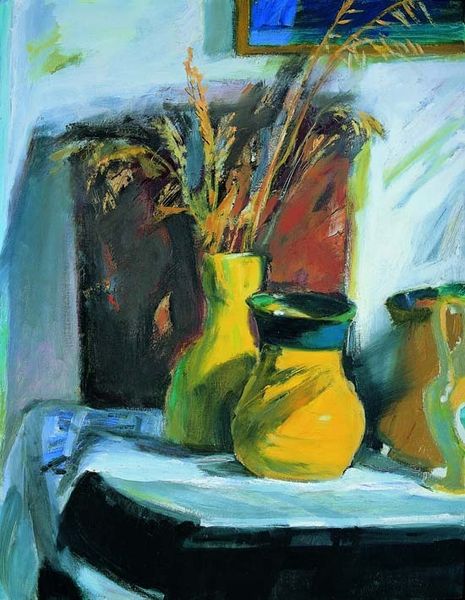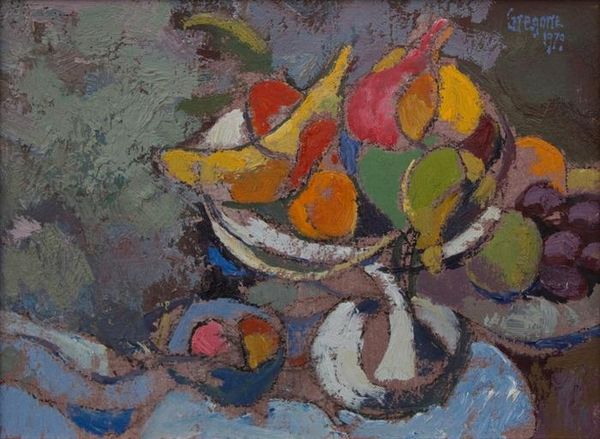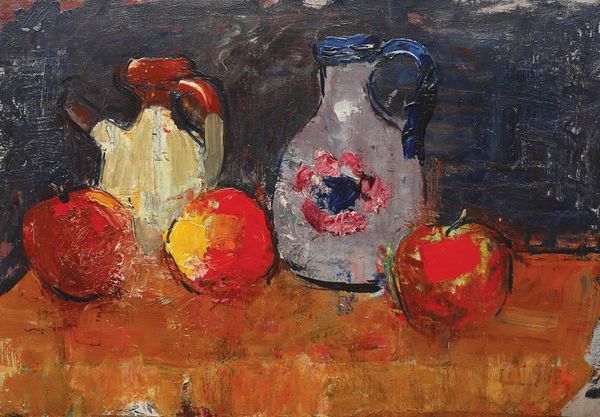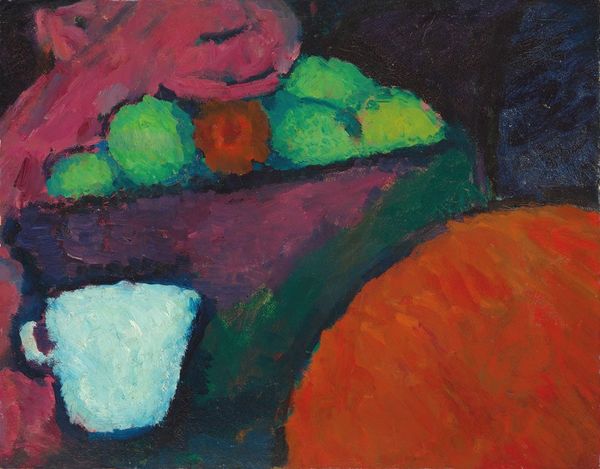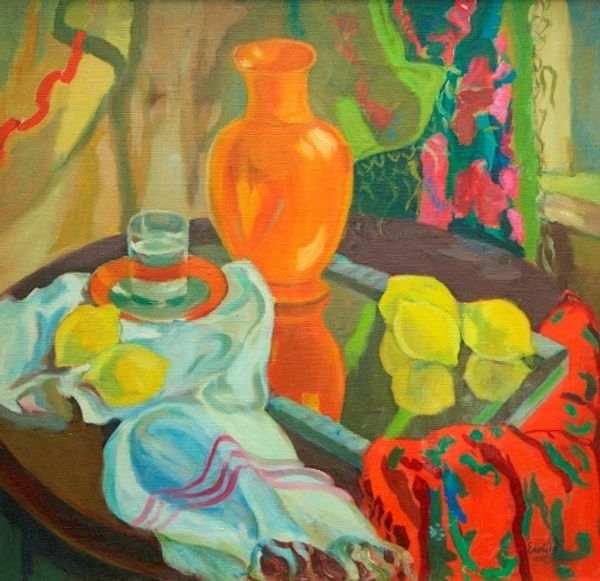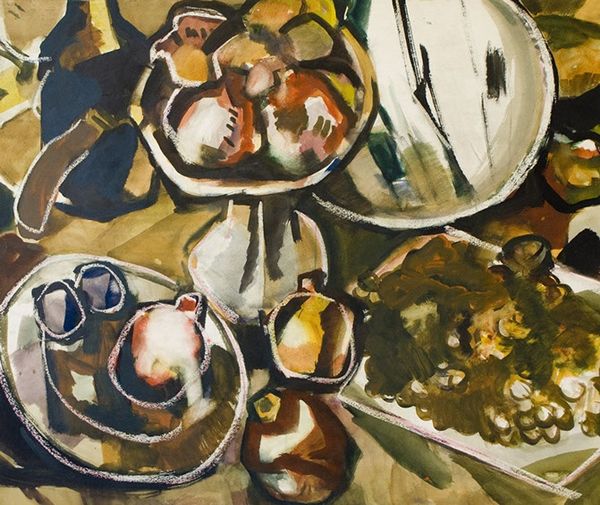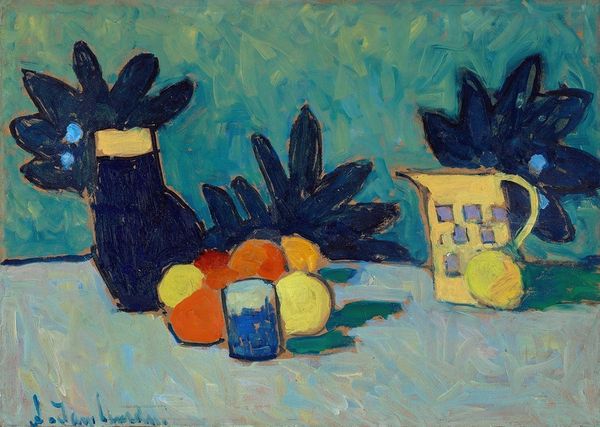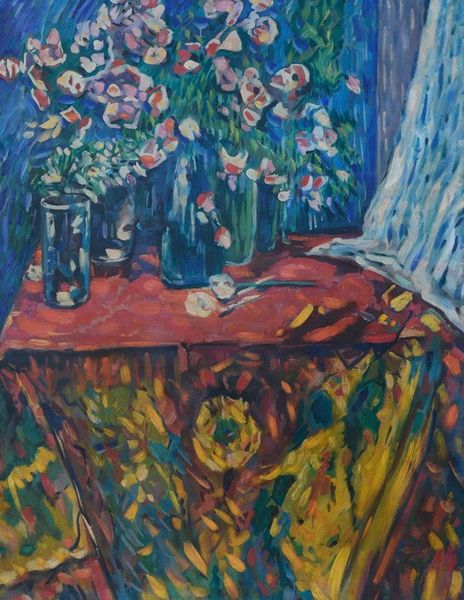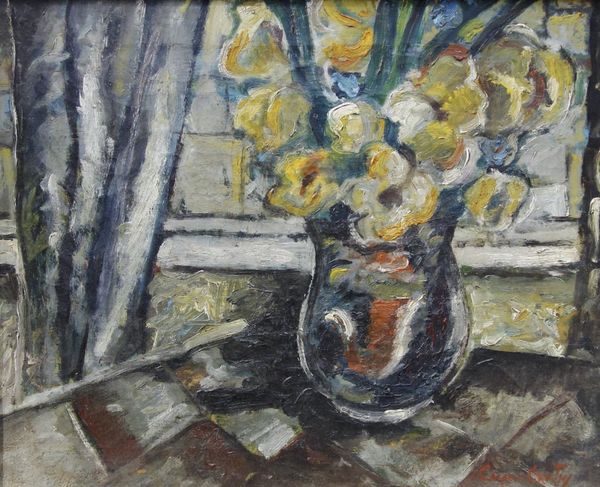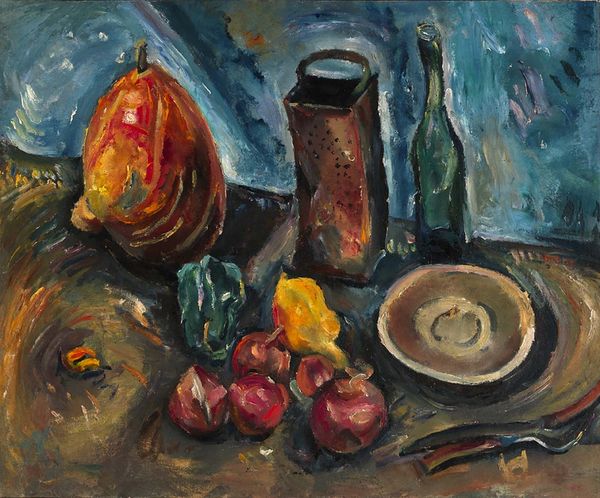
Copyright: Public Domain: Artvee
Curator: Welcome, everyone. Before us is Zygmunt Waliszewski’s 1936 painting, "Blue Flower Vase," crafted using oil paints. Editor: The thick impasto creates a tactile surface; the blues jump out in a strangely joyful, almost clumsy way. It's quite affecting. Curator: Indeed. The brushstrokes reveal much about Waliszewski’s process. Note the textured paint application, indicative of an expressive and vigorous handling of the oil paint, not particularly refined; however, its materiality is raw. I wonder about the availability of materials to Waliszewski at the time, perhaps affecting his final style. Editor: The vase itself is striking—that assertive blue coupled with red, stylized floral designs. They're not quite traditional flowers, are they? It makes me think about the disruption of symbolism following World War I; older, classical forms simply don’t suffice anymore. Waliszewski may be reflecting this disruption of social symbols here, making room for a modernist symbolism. Curator: You're prompting me to see how the placement of the vase – slightly off-center – challenges conventional still life composition. Furthermore, the materiality of the fruit and the surrounding drapery – so palpable through visible brushstrokes - subverts the idea of mere representation; we see Waliszewski’s engagement with the real. The art school where Waliszewski attended surely influenced his development as an artist during a pivotal point in Polish art. Editor: Precisely. The almost crude application contributes to an overall feeling of honesty. Waliszewski refrains from idealizing the imagery. Look closely, there is an almost uncomfortable realism about the half-eaten fruit near the vase; this is symbolic of a break with tradition. And those swirling patterns on the vase? Very evocative, dream-like. Curator: We see the creation as much as the creation. It makes us wonder about the circumstances under which Waliszewski would make such an artwork, as well as its status as an expressive object versus a commodity made within a particular network. Editor: And the beauty lies in the fact that Waliszewski, through his chosen motifs and vibrant colors, leaves room for a continuous reshaping of the symbolism in the eyes of its viewers. Curator: Thank you for these rich insights. Exploring art through process opens unexpected avenues into its meanings and contexts. Editor: Likewise; decoding visual signs opens another portal into history, the human psyche, and much more.
Comments
No comments
Be the first to comment and join the conversation on the ultimate creative platform.
